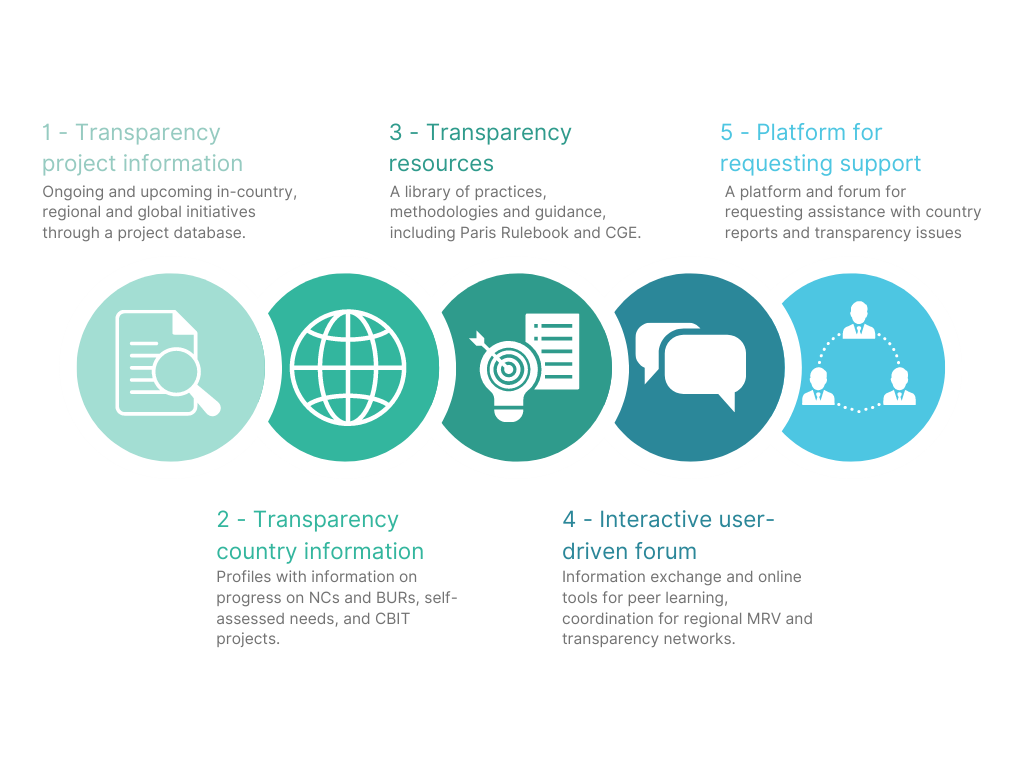The new Climate Transparency Platform covers everything related to the Enhanced Transparency Framework of the Paris Agreement and the continued reporting under the UNFCCC.
It provides a global overview of transparency initiatives and developing countries transparency efforts, allowing users to stay up-to-date on the latest developments, events, and knowledge products, as well as get detailed information on any developing country, support provider and transparency projects. The platform allows for vivid exchange within the climate transparency community, both through a Global Forum as well as ten Network Forums for peer-to-peer exchange and learning among countries.
The platform also serves as space for coordination among transparency support providers, and for countries to directly request support to cover specific needs for transparency in all areas of the Enhanced Transparency Framework.
The platform was presented at the Bonn Climate Conference in early June, where among others the Initiative for Climate Action Transparency (ICAT), represented by Head of Communications Karen Van der Westhuizen greeted the arrival of an integral platform for transparency.
“This platform is something that we have been waiting for, for a very long time, and I can see that it is going to have a massive impact on the collective work that we do. […] If you think about what countries really need, then it’s a place to go and look for help and information, and to exchange information, and the platform is a fantastic place to do that.”
The wider transparency community has an integral role in building and improving the Platform. This shared responsibility is the key to maintain engagement and keep all information up-to-date at all times.
One-stop-shop for climate transparency
As well as providing updated overviews and a direct avenue for getting support, the Platform serves as a one-stop-shop for all transparency information.
The Knowledge Centre of the Climate Transparency Platform contains everything from case studies to guidelines, offering a comprehensive and diverse range of knowledge products that can help build capacity and facilitate learning for policymakers, practitioners and experts.
At the launch of the Platform, Milagros Sandoval Diaz, General Director of Climate Change and Desertification from Peru, addressed the shared needs of developing countries, when comes to transparency, and how the Climate Transparency Platform can help push better climate action:
“Our challenges are similar, we need better information, we need to strengthen capacities, we need the necessary institutional arrangements for all these processes, and thanks to initiatives like this we are moving forward to making better decisions.”
Networks and forum
An essential part of the Platform is the focus on exchanging experiences and allowing users to learn from each other.

The Transparency Networks are the key support modality of the CBIT-GSP project through which support is provided to countries. The network activities include regional trainings, experience-sharing webinars, virtual workshops and direct technical support activities to countries based on their priorities and needs.
The Global Forum is a vibrant hub of knowledge, ideas, and discussions. This space serves as a virtual meeting place where individuals from all corners of the world gather to engage in meaningful conversations and exchange diverse perspectives on a wide range of topics within the climate transparency community.
The Community of Practice is a safe space for experts, practitioners, and other relevant stakeholders to exchange knowledge and best practices on climate transparency. Its mainly for knowledge sharing and peer support for the transparency community.
An inclusive build
The design and build of the Climate Transparency Platform is based on an inclusive process. Stakeholder consultations were held with transparency experts, country & project focal points, and international agencies & initiatives.
The goal was to identify and define the key functions and features that meet the needs of a wide range of transparency stakeholders.
This also means that the current beta version of the Platform is bound to change and adapt to both arising needs and the user experiences going forward.
